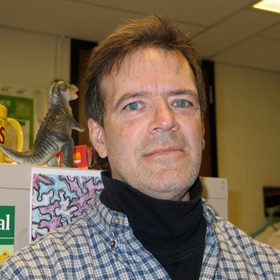

1445 Gortner Avenue
St. Paul, MN 55108
United States
David
Marks
Pennycress (Thlaspi arvense L.) is being developed as a new oilseed crop that can provide a feedstock for biodiesel and a winter cover that protects the environment. Presently it is considered a weed, but recent studies have shown that it can be double-cropped in the planting rotation between corn and soybean (see image). As such, it can provide an important ground cover for the barren land that currently exists after corn harvest in the fall until the establishment of soybeans the following summer. This lack of plant cover leaves the soil vulnerable to erosion and to the escape of nutrients. Soil erosion results in sediment loading of streams, and the leaching of nitrate-N into surface waters reduces fresh water quality and contributes to the development of the “dead zone” in the Gulf of Mexico. As a winter cover, pennycress plants can protect soil from erosion and can scavenge excess nitrogen and phosphorous that would normally be washed into streams and waterways during rain events. Pennycress will be marketed primarily as an oil seed crop with the added benefit of being a winter cover crop.
Our goal is to develop varieties of pennycress optimized for Minnesota conditions. We have taken advantage of recent innovations in DNA sequencing technology to develop genomic resources for pennycress. These include de novo assemblies of the pennycress transcriptome and genome. Analyses of these sequences have allowed us to predict the identity of over 27,000 genes. Because pennycress is closely related to Arabidopsis thaliana, we can use the vast store of information that has been gained from over 30 years of studies on Arabidopsis to design strategies to improve pennycress. For example, many mutations in Arabidopsis can be considered to confer agronomically desirable phenotypes. We predict that we can use mutation based-strategies to identify similar alterations in pennycress. Our approach will take advantage of new technology that can greatly shorten the time it takes to domesticate a new crop species as described in our recent review (see recent publications).
Dorn, KM, Fankhauser, JD, Wyse, D, Marks, MD (0000) Assembly of the field pennycress genome on a desktop computer provides tools for the domestication of a new winter biofuel crop. Under review
Sedbrook, JC, Phippen, WB, Marks, MD (2014) Refereed Review: New approaches to facilitate rapid domestication of a wild plant to an oilseed crop: Example pennycress (Thlaspi arvense L.). Plant Science 227:122-132.
DOI: 10.1016/j.plantsci.2014.07.008
Dorn, KM, Fankhauser, JD, Wyse, D, Marks, MD. (2013) De novo assembly of the pennycress (Thlaspi arvense) transcriptome provides new tools for the development of a winter cover crop and biodiesel feedstock. Plant J 75:1028-38.
DOI: 10.1111/tpj.12267
Ph.D., Purdue University, 1985